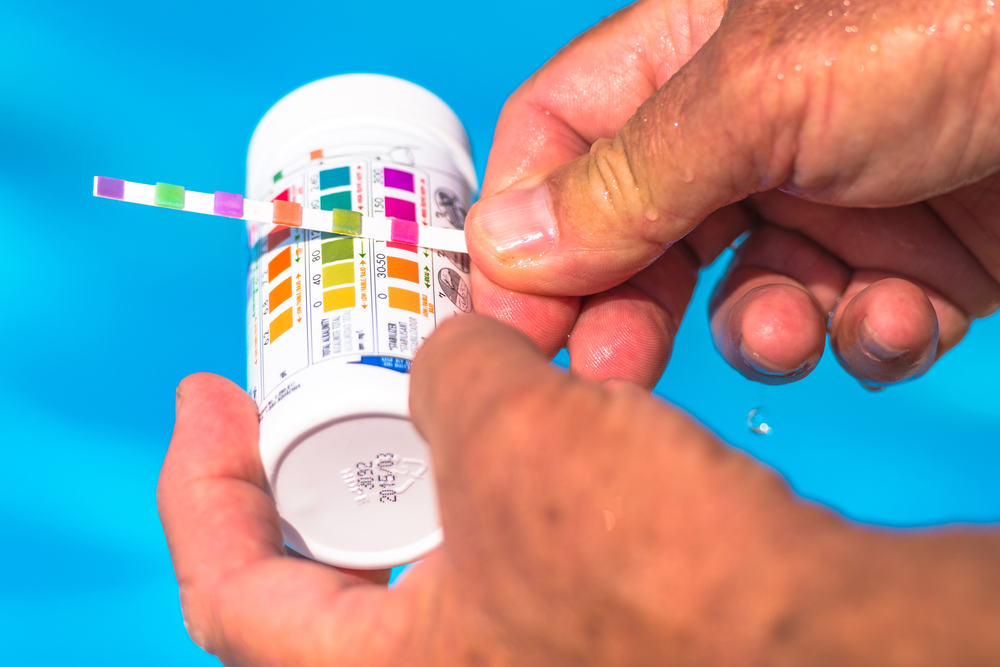With warmer weather on the horizon, it’s time to think about getting your swimming pool ready for summer fun. One of the most important steps in opening your pool for the season is “shocking,” a process that involves adding chemicals to your pool to break down contaminants like bacteria, algae, and chloramines.
While we strongly recommend you leave this to experienced pool builders in Oceanside, CA, we use today’s blog to walk you through the pool shocking process. Not sure why you should shock your pool after winter and what chemicals are essential for a clean, safe swimming environment, keep on reading below and you’ll learn all you need to know!
Should I shock my pool after winter?
The simple answer is yes. Shocking your pool after winter is crucial to preparing it for safe use. Over the winter months, even if your pool has been covered, it can accumulate algae, bacteria, and other organic contaminants. These not only make your pool look uninviting but can also pose health risks to swimmers. Ideally, you should shock your pool 24 to 48 hours before you plan to open it, allowing the chemicals to fully circulate and clean the water.
What chemicals do I need to open my pool for the season?
Here’s what you’re going to need:
1. Chlorine
Chlorine kills bacteria, algae, and other harmful pathogens in the water. For the initial opening, chlorine levels should be higher than normal to effectively shock the pool. After the initial shock, maintain a chlorine level of 1-3 ppm (parts per million) throughout the swimming season.
2. pH balancer
Maintaining the correct pH level (ideally between 7.2 and 7.6) is essential for effective chlorine performance and swimmer comfort. You can raise pH levels using soda ash or lower them with muriatic acid or sodium bisulfate.
3. Alkalinity increaser
Total alkalinity acts as a buffer for the pH level, keeping it stable. The ideal range for total alkalinity is 80-120 ppm. Baking soda is commonly used to increase alkalinity if levels are too low.
4. Calcium hardness increaser
Calcium hardness is important to prevent plaster damage in concrete pools and maintain the integrity of the pool. The ideal range for calcium hardness is 200-400 ppm, depending on your pool type. You can increase calcium hardness with a calcium chloride additive.
5. Algaecide
While shocking primarily helps clear out algae, adding an algaecide as part of your opening routine can prevent future algae growth. It’s a useful preventative measure, especially if your pool has had algae issues in the past.
6. Stabilizer (Cyanuric acid)
Cyanuric acid protects chlorine from being broken down by sunlight, making it a crucial additive for outdoor pools. Maintaining cyanuric acid levels of 30-50 ppm will help stabilize your chlorine and extend its effectiveness.
7. Shock Treatment:
Lastly, the shock treatment itself, which is usually a high dose of chlorine (either as calcium hypochlorite or sodium dichloroisocyanurate) or a non-chlorine substitute like potassium monopersulfate. Make sure to follow the manufacturer’s guidelines on how much to use based on your pool size.
Where can I find the best pool builders in Oceanside, CA?
Whether you’re located closer to the sea or further inland, So Cal Custom Pools are the proven experts in concrete pool construction near you. Our award-winning team offers decades’ worth of experience, high-end tools, and expertise to completely upgrade your existing pool, help you prepare for the warm season ahead, or build a new outdoor swimming pool from scratch.
You’re welcome to stay at home and keep track of the works or you can take your loved ones to Legoland California while we’re making sure that every aspect of your future garden splash pad is done with utmost care and attention to detail. Reach out to us today and we’ll get down to your backyard quickly to start measuring and laying the plans!



 5-Star Pool Builder
5-Star Pool Builder
 5-Star Rating on Facebook
5-Star Rating on Facebook
 We are on Angie's List
We are on Angie's List




